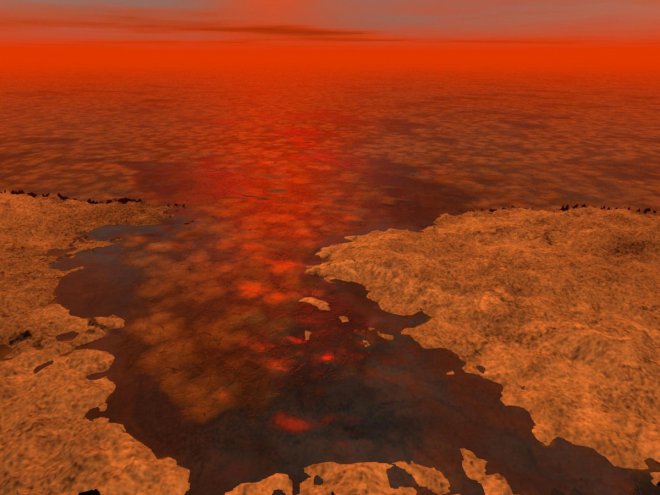
As scientists continue to study the landscape of Saturn's largest moon, Titan, from data transmitted by Huygens to Cassini spacecraft, they expect to find something extraordinary from the unknown land – probably alien life.
Huygens is a robotic spacecraft, which was a part of the the Cassini–Huygens mission sent to Saturn on October 15, 1997. The space probe landed on the planet's moon on 14 January 2005, after being separated Cassini orbiter on 25 December 2004. With this phenomenal landing, Huygens became the first spacecraft to accomplish landing so far in the outer solar system. Recently, Nasa shared a video taken by the spacecraft when it landed on Titan's surface.
Also read: Alien news: Spider-shaped humanoid found on Mars fuels speculations of extraterrestrial life
The images of Titan's topography that Huygens sent back seem to have come out directly from any sci-fi Hollywood movie. The place where the space probe landed had pebbles of water ice scattered over an orange surface and mostly covered by a thin haze of methane. The temperature of the gigantic satellite is always hundreds of degrees below zero. After sending data for about 90 minutes after touchdown, the Huygens probe got shut down forever and till date remains cut-off from humanity.
In that little time, the machine managed to send images showing rugged highlands and intricate narrow valleys crisscrossed by drainage channels, reported The TeCake. Later more visual data from the Cassini Mission confirmed the existence of permanent liquid hydrocarbon lakes in the polar regions of Titan.
Also read: Pandora's potato look: Nasa releases spectacular Cassini pictures of Saturn's moon [PHOTOS]
Huygens also revealed that the brightness of the surface of Titan is 1,000 times dimmer than full solar illumination on Earth. The sun, which appeared almost at the zenith in the orange sky when the spacecraft landed, looked like a small bright dot about one-tenth size of the sun what we see from earth.
"The Huygens images were everything our images from orbit were not. Instead of hazy, sinuous features that we could only guess were streams and drainage channels, here was incontrovertible evidence that at some point in Titan's history and perhaps even now there were flowing liquid hydrocarbons on the surface. Huygens' images became a Rosetta stone for helping us interpret our subsequent findings on Titan." said Cassini imaging team lead Carolyn Porco during a JPL press release, according to the website.
In a land so different from anything humanity has ever come across do you think discovering alien life will be a very surprising thing?
Check out the video here:









